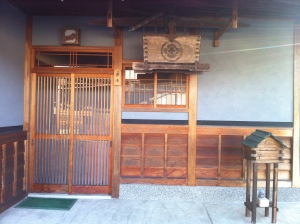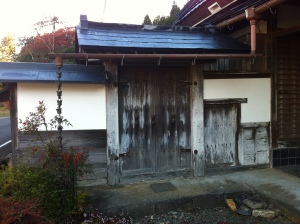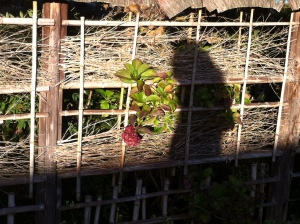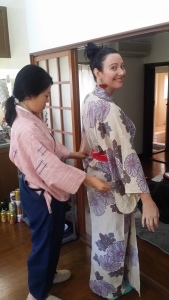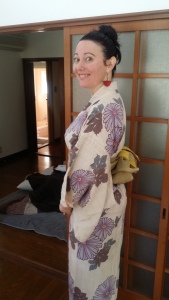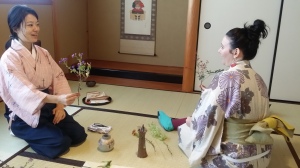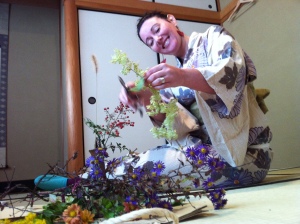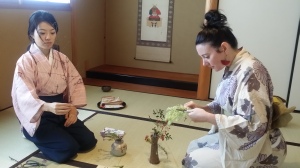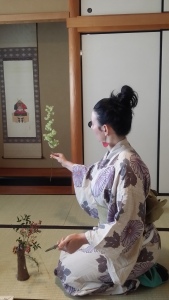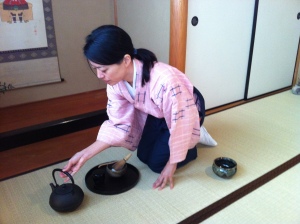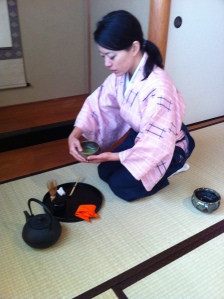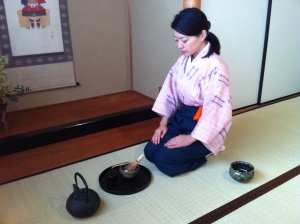Day 3 in the Japanese mountains: Morning Culture
That morning, as I always love to do when leaving a place, I took a walk through the neighborhood picking twigs and flowers to use for our Ikebana class.
Midori went to a special training school teaching how to perform traditional tea ceremony and the flower arranging art, Ikebana.
You can learn and observe these skills as added parts to their tour.
I really wanted to learn a little about the foundation of the art of Ikebana and you can’t have a first visit to Japan without witnessing a tea ceremony!
Midori dressed in the traditional training/teacher style of dress with pants and cotton top;
For the sake of time, she dressed me in a summer cotton kimono made of beautiful fabric and Obi that I adored.
Midori’s grandparents used to run a Kimono shop in Kobe thus I’m sure her collection of Kimonos is gorgeous!
The process of Ikebana goes like this:
Begin with flower selection-
You shouldn’t choose the plant based on it’s beauty, but on the energy you feel towards the plant and how they relate to the other plants.
Midori explained the tradition and meaning surrounding Ikeban;
If one stops and gives attention to the beauty of the flowers, it is a failure
The flowers should be seen through, helping to make your gaze pleasant, but not stopping the flow of energy
One should appreciate Ikebana like one gazes at the moon, using the back of the base of your skull to see, not actually seen with your eyes
This way the energy and fengshui is in balance.
When you feel good about your group, 3-4 plants will do;
Hold up each plant individually
Close your eyes
When you open your eyes, if there is anything out of place that you didn’t see before;
Cut
Balance the energy of the plants in space
Do not arrange the flowers to one another, but arrange them how they relate to the open space
Midori set up our room to be clean and zen, especially honoring the small alcove mantel piece with a samurai scroll.
She explained this area must be kept clean of all other clutter as it represents and entrance into another spiritual world.
It is an area to be respected and honored and not crossed over for mortals.
There are several different schools of thought when it comes to traditional Japanese practices;
Midori learned more of a soldier style way that was used traditionally for performance for samurai.



